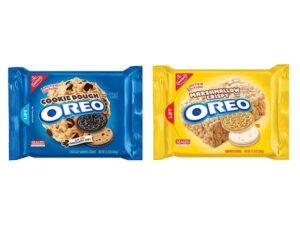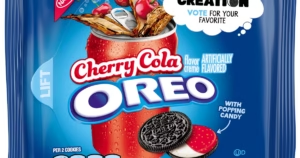This AI UPGRADE Showcase spotlights companies that aren’t just experimenting with AI; they’re fundamentally rethinking how they innovate. And when the company is behind Oreos, Ritz and Chips Ahoy, that’s not just a snack story, it’s a really tasty strategy story! Now brace yourself for some food puns and keep reading.
🔍 The Innovation Snapshot
⇒ Company: Mondelez International (makers of Oreo, Ritz, Cadbury, Chips Ahoy)
⇒ Headquarters: Chicago, IL
⇒ Sector: Consumer Packaged Goods (CPG)
⇒ The Big Idea: Using AI to design, test, and launch snacks 4–5× faster while factoring in nutrition, cost, and sustainability
The Problem Worth Solving
Traditionally, developing a new snack takes 2–3 years. That’s a long time in a world where consumer trends shift overnight. By the time a product hits shelves, the trend that inspired it may already be gone.
At the same time, shoppers expect more choice: healthier options, sustainable ingredients, and new flavors at competitive prices. For a CPG giant, the risk of being late to shelf space is real. (Just ask the brands still betting on kale chips. #prefercookies)

Understanding the Potential
Mondelez realized AI could do more than speed up existing R&D.
It could reinvent how recipes are created in the first place. I’ve long been fascinated by how AI is reshaping product design and development but, I’ll be honest, I was focused more on non-consumable manufactured goods (think gears, cars, etc.) so imagine my delight to come across this case study!
By crunching decades of consumer taste data, ingredient costs, and sustainability factors, AI became more than a lab assistant. It was able to suggest recipes that could balance taste, nutrition, and cost, all before the first test batch is baked.
This is a great example of the “G” in UPGRADE: Go AI First.
Don’t just automate and speed up old processes with bits of AI; imagine what you could do differently with AI from the start.
Going AI First
Here’s what Mondelez has actually done:
AI generated 70+ recipe ideas, including the now-famous Gluten-Free Golden Oreo (New York Post).
Algorithms factored in taste, supply chain costs, and carbon footprint (Vice).
Development cycles dropped from 3 years to under 12 months.
And it worked. New launches helped Mondelez deliver a 5.4% revenue bump in Q2 2024 (New York Post). For a company of their size, that’s not crumbs. (See what I did there?! I love a cookie pun!)
Why It's Working
Three reasons this approach hits:
Real problem solved: Faster, smarter innovation that considered the whole picture.
Unique data advantage: Decades of snack sales and flavor preference data. (Yes, your late-night Oreo binge is now a data point. It’s totally justified…you’re welcome.)
Human oversight remains: Every AI suggestion still gets validated by food scientists and taste panels.
That’s my 20-60-20 equation in action: humans set the direction (20%), AI does the heavy lifting (60%), humans validate, finish, and refine (20%).

The Business Impact
The business results?:
4–5× faster innovation cycle
5.4% quarterly revenue growth (New York Post)
Category leadership in gluten-free and plant-based snacks
Positioned as an AI-forward leader in a traditionally slow industry
Put simply: AI helped Mondelez move from chasing trends to setting them.
Deploying in Stages
Mondelez didn’t roll this out everywhere at once. They followed a staged, intentional rollout that looked like this:
Piloted with Oreos and Ritz to test whether AI-driven recipes could meet quality and taste expectations.
Expanded into chocolates and beverages, applying the same AI approach to entirely different product categories. This proved that the model was adaptable beyond cookies and crackers.
Built an AI-powered Snack Lab to scale innovation across the entire business, centralizing their data, tools, and expert teams so they could continuously feed new ideas into the product pipeline.
That’s the “D” in UPGRADE: Deploy in Stages. Start small, validate, then expand.
Your AI UPGRADE Opportunity
Here’s what leaders in any sector can take from Mondelez:
Start with your bottleneck. Identify the slowest or most frustrating part of your innovation cycle. That’s where AI can make the biggest impact.
Use AI for idea generation. You don’t need it to be perfect; you need it to be prolific. Think of AI as a brainstorming partner that never says your ideas are bad (even if they might be bad…and, of course, you can ask it to be more challening but it’s good to take the wins where we can get them some days!)
Experiment, then validate. Try multiple AI-generated options, test them quickly, and move forward with the winners.
Keep the human bookends. You decide when and where to apply AI; AI drafts; you validate, refine, and make the final calls. Your critical thinking is what makes it valuable. Your expertise is what makes the output trustworthy.
AI may not invent your next Oreo. But it can clear the space to test ideas faster, smarter, and at a scale that matches today’s pace of change.
This is part of our AI UPGRADE Showcase series. For more on implementing the UPGRADE Framework in your business, check out our resources or book a strategy session. Let’s turn AI potential into business performance.
